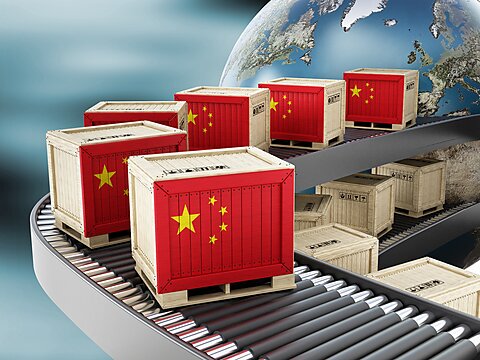Clark Packard
Relative to the so-called “Liberation Day” tariffs and subsequent retaliatory increases, the recent trade “truce” announced by Washington and Beijing is certainly an improvement. NPR’s Morning Edition this week noted that, by comparison, President Trump has managed to make a 30 percent tariff on imports from China “feel like a relief.” But while markets initially thrilled with the prospect of a détente between the world’s two largest economies, a closer examination shows continued reason for concern.
Although a clear improvement on what immediately preceded it, the new status quo still imposes steep economic costs. In the broader context of rates imposed by the United States in recent decades, tariffs on China remain punishingly high. Tariffs of this scale harm American consumers and firms, many of which face tariffs on their imports and exports, and serve as a drag on the broader economy as tariff uncertainty continues apace.
Under the terms of the 90-day pause allowing further negotiations, the United States agreed to lower its tariffs from 145 percent to 30 percent (a 20 percent China-specific levy from February and March, plus the 10 percent baseline tariff that virtually every country now faces after early April). Though an improvement, the new figure is significantly understated.
The 30 percent rate comes on top of the tariffs on imports from China imposed during Trump’s first term, which average about 20 percent and were applied to approximately two-thirds of all products from China. Factor in basic Most Favored Nation rates that apply to virtually every country (including China) in the world, and certain everyday products from China are facing tariff rates above 70 percent. According to the Peterson Institute for International Economics (PIIE), the average tariff today on imports from China is 51.1 percent. This is about 15 times higher than in 2018, before the US-China trade war started.
Retailers will have no choice but to raise prices (or remove certain products from their shelves). Walmart, the world’s largest retailer, recently warned that it will likely hike prices in the coming weeks as a result of the tariffs (a development that drew the ire of Trump, who, in a social media post, demanded that the company “eat” the tariffs — an implicit and overdue acknowledgment that foreign trading partners do not bear the entire cost of tariffs). Target, Walmart’s biggest competitor, is reportedly cutting its outlook amid a “highly challenging environment” and, like Walmart, “adjusting prices in response to the volatile environment”.
American consumers looking for more affordable goods via direct shipments from China are also out of luck. The Trump administration has effectively eliminated the de minimis exemption for packages valued at $800 or less shipped from China. Now, these previously duty-free shipments, which overwhelmingly benefit lower-income households, will be subject to duties of at least 30 percent. This will raise prices for American consumers and create all sorts of other problems, as I explained earlier this year.
American exporters are caught in the crossfire, too.
Despite retaliatory tariffs imposed by China during the first Trump administration, the country has remained a lucrative market for American producers. Indeed, it’s the US’s third-largest export destination, trailing only Mexico and Canada. Like the Trump administration’s tariffs, Beijing’s tariffs on American products have fluctuated wildly this year and currently average 32.6 percent.
Under the terms of the 90-day pause, tariffs are set to snap back to comically high levels in August unless the two sides can reach a more permanent agreement. That seems highly doubtful. A truly binding agreement between the US and China over the ails in the trade and investment relationship would almost certainly take longer to solve. Instead, a more piecemeal approach with continued threats and reprisals seems more likely. There are already signs that the shaky détente between Washington and Beijing may be fraying over the Trump administration’s warnings to firms not to use Huawei’s advanced semiconductors.
Meanwhile, lingering uncertainty about the future of US and Chinese tariffs continues to hinder businesses that rely on trade between the two countries. Rick Woldenberg, whom our colleague Scott Lincicome recently interviewed for a Cato video, told the New York Times that even though his Chicago-based small business may resume importing from China, they are not planning to lift a hiring freeze or resume investments that have been on hold since the tariffs were announced. The company cannot make long-term decisions based on short-term relief.
Similarly, a recent Seattle Times article indicates that for exporters who operate on longer time horizons, such as farmers who are just planting seeds for crops that will be harvested in the fall, the pause does not amount to much reprieve.
A recent Washington Post analysis found that since the president’s inauguration in January, the administration has made more than 50 tariff announcements and revisions. This reckless approach has injected considerable uncertainty into the US economy (Figure 1), impeding growth and investment. Businesses have been left grappling with unpredictable costs and disrupted supply chains amid fluctuating tariff rates and further potential retaliatory measures from trading partners, including China. This “wait-and-see” approach leaves capital on the sidelines and dampens consumer spending. The first quarter GDP growth turned negative—the first such negative quarter since the first quarter of 2022—meaning the US is halfway to an official recession.
FIGURE 1
The tariff walkdown with China is a positive step, but much more needs to be done to spare the US economy from self-inflicted calamity. The surest path to avoid recession is to shelve the tariffs and tariff threats.

